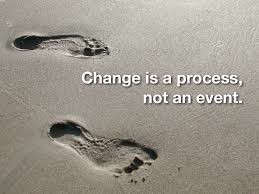One of the first things to do when starting a Canadian Private Practice is to find an office space to rent. Renting (or buying) your own office is ideal but for most Canadian counsellors, it is too expensive when beginning private practice. Luckily, there are many professionals and clinics looking to rent out their offices when they are not using them! Here are two factors to consider in your search for the perfect space:
Location
When searching for office space it is important to consider where it will be located. The main thing to remember is that clients will travel to see a good therapist. However, the more convenient your office space is located… the better.
Many therapists feel that if there is a location with lots of counsellors that they should stay away from that area and find a location that doesn’t have any therapists. But usually, if an area has lots of counsellors, it means that there are lots of people willing to pay for therapy in that area! All of the office spaces that I have rented have been in a city where there are many therapists located. What I have found is that people are more willing to travel to a city to see a therapist than travel from a city to a rural counselling office.
Other things to consider:
Parking
One of the most important considerations is parking! In my first office, there was no parking and clients constantly complained about how difficult it was to find a parking space. This also meant that many clients were late for appointments as it took a long time for them to find parking. So, when searching for an office space… make sure there is parking available!!!!
Air Conditioning
In most provinces, spring/summer (and sometimes fall!) can get VERY HOT! Make sure that the office space you rent from has air conditioning. The last thing you want is to be counselling a client in July when it is 30 degrees Celsius! Clients will appreciate the cool office and the cool air will help you stay focused.
Accessibility
If you want to have the option to counsel all populations it is important to make sure that your office space is wheel chair accessible. Being accessible can also be helpful for clients who are injured (i.e. broken leg). The last thing you want are clients cancelling appointments because your office is not accessible.
Counselling At Your House and/or Online Therapy
Renting an office space will not be an issue if you want to build a private practice at your home or online. There are many legal and ethical considerations for these types of private practices so be sure to check with CCPA and your insurance provider before developing your Canadian private practice.
Starting a Canadian private practice at home or online will save you money but you also might lose clients who only want in-person therapy. I offer both online and in-person counselling and also find it healthy to have an office space that is separate from my personal space.
Rent Price
The price to rent an office depends on what city, province, or town you are located in. You do not want to be ‘house poor’ when renting space so make sure that you rent is no more than 20% of your income. The three ways that most Canadian offices rent out space are either:
- Rent per hour: When a practitioner is not using their office at certain times of the day/night and is looking to rent their office when they are not there.
- Rent per day: When a practitioner is not using their office on certain days and is looking to rent their office on those days.
- Percentage: Instead of paying rent, a practitioner will take a percentage of your counselling fee. This can be useful at the beginning because you will not have to worry about paying rent. BUT as your business grows… more and more of your money will go towards the practitioner/clinic. For example, if you charge $100 per session and the practitioner takes 30%… every time you see a client you will be paying the practitioner/clinic $30… so the more clients you see… the more money the practitioner/clinic will take. Whereas, if you have a set rental fee, you have the ability to make a lot more money in the long run! The busier your Canadian private practice becomes, the more money YOU will make. Plus, when you raise your prices it will not affect how much rent you are paying.
How to find a space:
The best way to find office space is to start sending out emails to other private practice counsellors in your area and/or health clinics (online advertising services like Kijiji.ca can also be helpful). When starting off, it can be best to just rent a day or couple evenings per week as you build your cliental. A simple sample email could look like:
Hi,
My name is Julia and I am a counsellor that is starting a private practice. I am looking to rent office space and am curious if there are any times during the week or on the weekend when you are not using your office?
Thank you,
Julia
Depending on where you rent, you can then choose to rent more time at the place you are renting from OR find another office space that meets your needs. Start small and grow big!
Happy searching,
Julia
About Julia
Julia Smith, MEd, RCT-C, CCC, is a Canadian private practice consultant who specializes in helping Canadian counsellors and therapists start private practice. She also owns a private practice in Halifax, Nova Scotia where she helps depressed teens build confidence, find happiness, and gain insight.
Click here to get more help with building your Canadian private practice!
*The views expressed by our authors are personal opinions and do not necessarily reflect the views of the CCPA

 “LinkedIn is the site where we’re investing time, not wasting time,” Leslie Hughes, LinkedIn optimization specialist and owner of
“LinkedIn is the site where we’re investing time, not wasting time,” Leslie Hughes, LinkedIn optimization specialist and owner of 